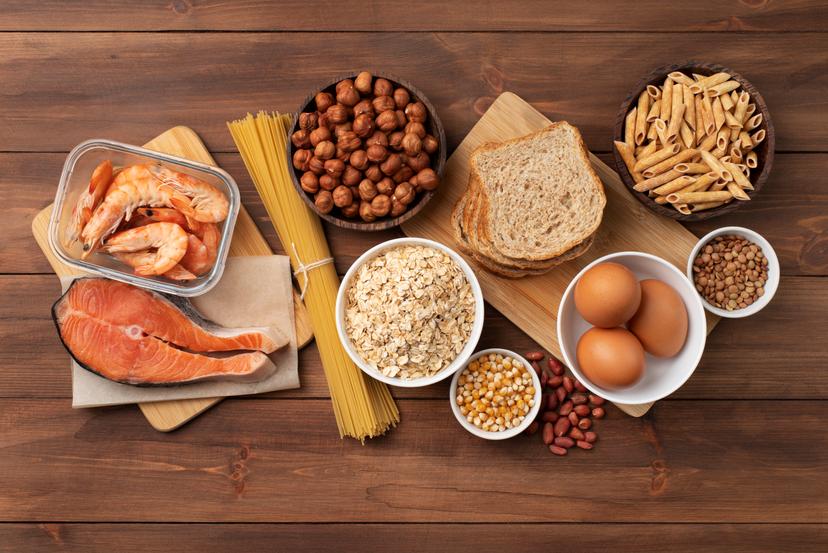July 2025
Global Frozen Desserts Market: From Cool Cravings to Culinary Innovation

Forget everything you thought you knew about frozen desserts. They’re no longer just a guilty pleasure or a summer fling. From probiotic-packed frozen yogurts to cardamom-laced gelatos and Instagrammable, jewel-toned sorbets, the frozen desserts market has become one of the coolest (literally and figuratively) spaces in the global food industry. As consumer preferences shift toward health-conscious, adventurous, and convenient options, the Global Frozen Desserts Market is transforming at a CAGR of 4.23%, expected to rise from USD 111.78 billion in 2024 to a frosty USD 155.71 billion by 2032.
What’s fueling this growth? Think vegan innovation, exotic flavours, rising incomes, e-commerce desserts surge, and a global population that’s always ready for a spoonful of something sweet.
Flavour Forward: How Innovation is Stirring Up the Market
Gone are the days when vanilla, chocolate, and strawberry ruled the freezer. Today’s frozen desserts market thrives on flavour innovation. Consumers are increasingly exploring bold and unique taste profiles, from saffron-cardamom fusions to spicy chili-mango swirls. There’s a rising interest in savory-spicy combinations, like miso caramel, that challenge the traditional definition of dessert.
Brands are also adding a health twist to indulgence with emerging palate shifts. Natural flavours combined with functional ingredients such as jaggery, millet, and probiotics are finding a place on the shelves. The fusion of premium ingredients and visual appeal has made frozen desserts a favourite among the Instagram generation, turning products into both -pleasers and content creators.
In November 2024, Ice Cream Works launched a diverse flavor portfolio segmented into classic, premium, and luxury tiers, introducing indulgent options like biscoff caramel and sea salt caramel fudge, redefining the frozen aisle.
Globally, the top five most popular flavors in frozen desserts and ice creams are mango, strawberry, red raspberry, lemon, and orange. While strawberry continues to lead in Europe, North America, and Latin America, regional variations reveal deeper layers of consumer taste:
- Asia Pacific is seeing increased interest in coconut, fruit puree blends, and white peach.
- North America favors richer profiles like peanut butter, dark chocolate, and milk chocolate.
- European preferences are trending toward vanilla, dark chocolate, and caramel.
- In the Middle East and Africa, fruit-forward flavors continue to dominate.
These variations emphasize the importance of regional flavor-driven experience, where brands create customized SKUs that align with cultural preferences while still allowing for experimentation.
Seasonal Cravings: Summer Peaks and Festive Spikes
If there's one thing frozen desserts love, it’s warm weather bringing in dessert driven nostalgia. Consumer demand peaks during summer months and festive seasons, especially in regions like North America and Europe. Think beach picnics, holiday parties, and roadside stalls—prime moments for a scoop or two.
In tropical regions like Southeast Asia, Latin America, and the Middle East, year-round heat keeps sales consistently strong, but local holidays and school vacations drive additional purchase spikes. Cooler months tend to reduce demand, but the rise of comfort-focused flavors like caramel fudge and premium chocolate keeps consumers coming back.
Manufacturers are now designing products and campaigns to counteract seasonality, promoting frozen desserts as a year-round indulgence. Online delivery platforms and artisanal, health-oriented products are helping normalize cold treats during cold weather.
Case in point: In June 2025, Conagra Brands launched over 50 new frozen SKUs, including plant-based single-serve meals and comfort-style frozen desserts—showing that seasonality is no longer a barrier to food-grade innovation.
Ice Cream: The Cream of the Market
Among all frozen dessert segments, ice cream remains the undisputed champion. Its creamy texture, flavour diversity, and ability to adapt to both indulgent and health-conscious preferences make it a global favorite. Traditional dairy scoops, plant-based alternatives, lactose-free versions and alternative sweeteners options now sit side by side in retail freezers.
Premium and artisanal brands are pushing boundaries with unexpected combinations and sustainable sourcing. Flexible packaging options—cones, bars, tubs, and single-serve cups—make ice cream a hit across age groups and eating occasions, from impulse buys to planned celebrations.
In June 2024, Nestlé Hong Kong launched its premium Mövenpick brand in China, targeting luxury hotel chains and affluent consumers with an emerging taste formats, European-style ice creams. This move signaled a broader trend: the rise of super-premium ice cream as a lifestyle statement.
Water-Based Ice Lollies and Sorbets: A Refreshing Growth Story
Within the broader frozen dessert space, water-based ice lollies, pops, and sorbets stand out as a leading subcategory, showing a 4% growth in frozen delicacy launches over the past five years. The Middle East and Africa have been at the forefront of this trend, driven by new-age flavors in premium cola-fruit combinations and concentrated sorbets.
Industry leaders such as Unilever have led innovation in this space through brands like Talenti, Calippo, and Streets, including collaborative launches with Disney. These products focus not only on fun and flavor but also on convenience and appeal to younger demographics. From chocolate-detailed confectionery bars to color-forward formulations, the emphasis is on enhanced visual appeal and experiential consumption.
North America: A Frosty Powerhouse
The North American market continues to lead the global frozen desserts industry, driven by a potent mix of consumer enthusiasm, advanced retail infrastructure, and relentless product innovation. From mainstream supermarkets to boutique ice cream shops, frozen treats are deeply embedded in the region’s food culture.
The U.S. in particular sees high per capita consumption, fueled by constant new launches, health-centric lines, and dietary-desserts lifestyle. Canada’s diverse population supports growth in multicultural and artisanal frozen desserts.
Online subscriptions and D2C (direct-to-consumer) models are expanding market access, especially in suburban and rural pockets. Efficient cold chain innovation further boost product availability and freshness.
In May 2024, Blue Bell launched an A&W Root Beer Float ice cream across 23 U.S. states—a nostalgic twist with broad consumer appeal, tapping into both flavor innovation and cultural connection.
The Evolution of Frozen Treats: Indulgence Meets Intentionality
Once seen purely as comfort food, frozen desserts are increasingly aligned with health and lifestyle trends. Consumer attention is no longer limited to taste alone. Consumers now enjoy indulgence, but with an eye on clean labels, allergen-free options, and better-for-you ingredients. Label claims and product positioning play a critical role in buying behavior.
Globally, the most prominent claims in the frozen dessert category include gluten-free, no additives/preservatives, vegan, vegetarian, and halal. Over the past five years, the category has seen a 16% increase in new product launches, particularly in variants that are low/no/reduced fat, trans fat-free, or free from saturated fats. Health-focused trends have led to a notable 5% CAGR growth in frozen dessert launches globally. North America, in particular, has embraced plant-based innovation, with a rise in vegan indulgence trends and products like smoothies, nut- and seed-infused desserts, and fruit-based frozen treats. This shift is a direct response to the growing demand for clean-label and animal-free alternatives, reflecting broader movements toward sustainability and conscious consumption. Flavors such as blueberry, banana, and strawberry continue to dominate, often paired with almonds, chia seeds, or oat-based bases to elevate nutritional value while maintaining indulgence.
This blend of indulgence and wellness highlights the need for brands to localize their offerings and claims, tailoring messages to align with regional health perceptions and cultural values.

Digital and Sustainable: The Frozen Future
As digital retail expands and sustainability takes center stage, the frozen desserts industry is seeing two powerful shifts:
- Tech-Enabled Distribution: Automated warehousing, app-based ordering, and digital payment integration are streamlining distribution and boosting accessibility. Digital platforms have enabled personalized offerings and on-demand delivery, making frozen treats just a click away.
- Eco-Conscious Packaging: From compostable tubs to recyclable wrappers, brands are investing in sustainable materials to reduce their environmental footprint. Regulatory frameworks around transparent label movement and ethical sourcing claims are also tightening, prompting brands to rethink ingredients and supply chains.
In September 2024, Bliss Chocolates India teamed up with Hangyo Ice Creams to launch a gourmet range, combining premium chocolates with sustainable packaging and engaging in-store promotions.
Conclusion: A Scoop of What’s next to Come
Looking ahead, several key trends are expected to define the next wave of innovation in this space:
- Children’s segments are gaining traction, especially in Latin America, with more products using character branding and sensory packaging to engage young audiences.
- In North America, expect continued growth in plant-based formats, driven by interest in smoothies, cheesecakes, and fruit-nut fusions.
- Globally, indulgence redefined will remain a primary innovation zone, with brands exploring fruit-based indulgent formats that satisfy taste without compromising on wellness.
As the frozen dessert and ice cream category grows more competitive, brands will need to double down on health-focused innovation, regional relevance, and experiential value. The opportunity lies in creating products that not only taste good but also speak to the modern consumer’s evolving lifestyle and values.
From nostalgic novelties to futuristic flavours, the global frozen desserts market is evolving rapidly. As health awareness, digital adoption, and flavour exploration continue to grow, brands that embrace these dynamics will stay ahead in a highly competitive, ever-cooling landscape.
Whether it’s a probiotic-loaded sorbet in Tokyo or a miso caramel gelato in Toronto, frozen desserts have found their place in both tradition and innovation. So next time you grab a scoop, remember: you're not just enjoying dessert—you're tasting the future.
To dig deep into the sweet tooth space and take a big slice for the sustainable growth of the business, download the full report today or connect with our experts at Markets.
Subscribe to our newsletter
Promise we won't spam you.
Share
Read More

July 2025
Gluten Be Gone: The Rise of the Gluten-Free Wave in Asia-Pacific’s Food Landscape
Asia-Pacific gluten Free Food and Beverages market is projected to witness a CAGR of 9.14% during the forecast period 2025-2032, growing from USD 2.16 billion in 2024 to USD 4.34 billion in 2032.

July 2025
India’s Quick Commerce Boom: The Rise, Race, and Reality of 10-Minute Delivery
Valued at USD 3.05 billion in FY 2024, India’s Q commerce market is not just growing, it’s exploding. Forecasts suggest it could soar to USD 13.38 billion by FY 2032, growing at a CAGR of 20.3%.

July 2025
India’s E-Gaming Market: A Digital Playground Set to Explode
Indian e-gaming market is set to experience a whopping 25.37% CAGR during the forecast period from FY2024 to FY2031, growing from USD 1.71 billion in FY2023 to a massive USD 10.44 billion by 2031.
REACH US



